Tears keep your eyes nourished, lubricated and healthy. They protect your eyes from dirt, dust and debris, helping prevent irritation and infections. You could develop dry eye syndrome if your eyes don’t produce enough quality tears. Redness, watery eyes, stinging or burning sensations, and blurred vision often characterize this condition.
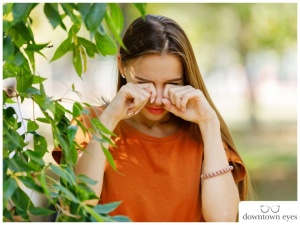
Moreover, various factors can affect your risk of developing dry eyes, such as gender, age, underlying health issues and environmental conditions. Did you know that allergies can also cause dry eye? A local optician tells you how.
The Connection Between Allergies and Dry Eyes
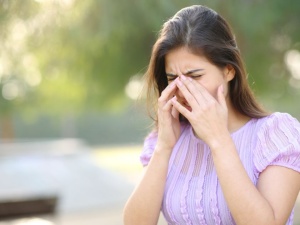
The link between allergies and dry eyes is rooted in your body’s reaction to allergens. Substances that may seem harmless could affect your body differently. For instance, your body might produce histamine to combat allergens like pollen, pet dander or dust mites. This histamine release can cause inflammation, causing your eyes to itch, swell and turn red. Inflammation in your eyes can affect your tear glands, causing dry eyes.
Keep in mind that some allergy medications, such as antihistamines or decongestants, can also trigger dry eye symptoms. If you have allergies, it will help to know the possible side effects of the medicines you’re taking. It will also allow you to determine ways to keep your eyes lubricated, like using artificial tears.
Though dry eyes may start as a minor irritation, it can lead to more severe problems, such as corneal abrasions or ulcers, if left untreated. If you suspect your dry eyes are due to allergies, don’t wait too long to see a specialist. Eye care professionals can recommend the best ways to manage your symptoms after an eye examination.
Types of Allergies That Can Cause Dry Eyes

Seasonal Allergies
An immune response to outdoor allergens like pollen from trees, grasses and weeds can cause hay fever or seasonal allergies. These allergies are more prevalent at certain times of the year, typically spring and fall when many plants release pollen.
Perennial Allergies
Year-round or perennial allergies don’t just occur in one season. They can happen at any time throughout the year. Indoor allergens, such as dust mites, pet dander and mold, are typical triggers. Unlike seasonal allergies, perennial allergies can cause persistent discomfort due to constant exposure to allergens. Reducing contact with triggers and maintaining good indoor air quality can help manage symptoms.
Food Allergies
Certain foods may cause an allergic reaction that includes dry eyes, among its symptoms. Common culprits include dairy products, wheat, peanuts, soy and shellfish. It’s worth noting that symptoms vary widely among individuals and can involve more than just dry eyes. Some might experience hives, stomach cramps and difficulty breathing. If you believe a food allergy might be contributing to your dry eye symptoms, it’s essential to consult a healthcare professional. They can help identify potential food allergens and suggest dietary changes to alleviate symptoms.
Contact Allergies
Eye care or cosmetic products can also cause allergic reactions and dry eyes. Ingredients in eye makeup, such as preservatives or fragrances, can cause eye irritation in some people. Similarly, some types of eyedrops can cause an allergic reaction. Let your eye doctor know if dry eye symptoms worsen after using particular products. They can help you pinpoint potential irritants and suggest suitable alternatives.
Factors That Can Exacerbate Allergy-Related Dry Eyes
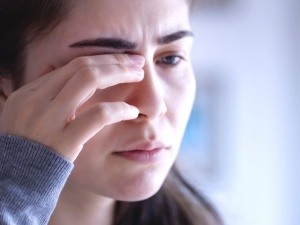
Environmental Conditions
High winds and low humidity can exacerbate dry eye symptoms. Wind can cause tears to evaporate faster, resulting in eye dryness. On the other hand, low humidity may also decrease moisture in your eyes.
Prolonged Screen Time
Using digital devices for extended periods can worsen dry eye symptoms. It is easy to forget to blink when staring at screens, causing tears to evaporate and your eyes to dry.
Age and Hormonal Changes
People over 50, particularly post-menopausal women, are likelier to experience dry eyes. Tear production can decrease with age, and hormonal changes can also affect eye lubrication.
Medications
Certain medications, such as antihistamines, decongestants, some blood pressure medications, and antidepressants, can reduce tear production and cause dry eyes.
Contact Lens Wear
Prolonged contact lens wear can irritate the eyes and contribute to dry eye syndrome. Some types of lenses are also more likely to cause dryness than others.
Allergy-Related Dry Eyes vs. Other Eye Conditions
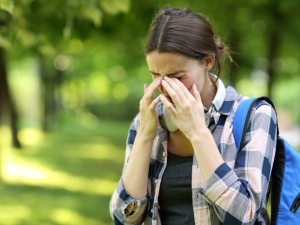
Are your dry eye symptoms accompanied by sneezing, runny nose or itchy throat? If so, they are likely associated with allergies. Remember, other eye conditions may present similar symptoms. For instance, conjunctivitis or pink eye can also cause red, itchy and watery eyes. Blepharitis, an inflammation of the the eyelids, might cause redness, grittiness and a burning sensation in the eyes. Then there’s also Sjogren’s Syndrome, an autoimmune disorder that can cause severely dry eyes, among other symptoms.
If you notice changes in your vision or suffer from severe symptoms, don’t wait long before seeking professional help. Remember, self-diagnosis can often lead to misdiagnosis. It’s best to schedule an eye exam appointment for accurate diagnosis and proper treatment.
Treatment and Prevention
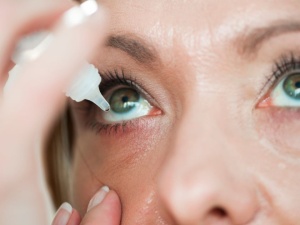
Treating allergy-related dry eyes starts with a thorough eye examination. Treatment often involves calming the inflammation and managing the underlying allergies. It might include using lubricating eye drops, ointments or prescription medications. Applying a cool compress can help alleviate irritation if your eyes are inflamed.
Furthermore, reducing exposure to allergens can help prevent allergy-related dry eyes. Regularly cleaning indoor spaces, limiting time outside during high pollen counts and changing your diet can benefit allergy sufferers. You can also avoid dry eye symptoms by using a humidifier in dry environments.


Leave a Reply